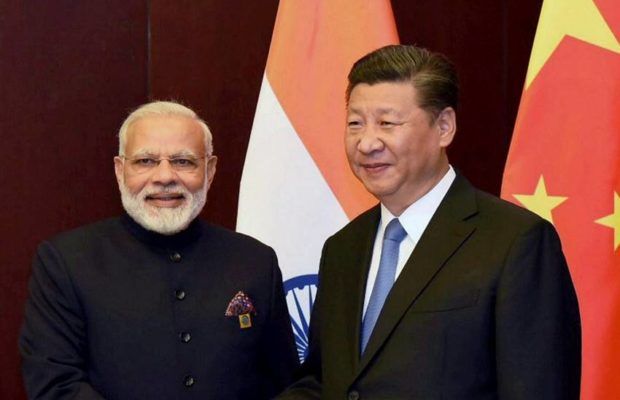Pakistan Emerges as a Leading Nation in Utilizing RMB for Global Trade

The Lede: Pakistan is taking the lead as one the first countries that utilize RMB (Chinese Yuan) for conducting international trade, according to the Daily Times, an English-language Pakistani newspaper. The decision comes after Russia adopted RMB as one of the main currencies for international trade and Brazil reached an RMB-based trade deal with China with the goal to stop using the U.S. dollar as an intermediary currency.
What we know:
- In November of the previous year, the People's Bank of China (PBOC) entered into a memorandum of cooperation aimed at setting up RMB clearing mechanisms in Pakistan. The Karachi Branch of the Industrial and Commercial Bank of China (ICBC) was designated as the RMB clearing bank.
- The People's Bank of China released a statement on November 2 stating that the arrangements made would aid companies and financial organizations from both countries in conducting cross-border transactions utilizing the RMB currency.
- China and its long-term ally Pakistan have been working on strengthening trade ties amid major turmoil in global geopolitics. After being closed for nearly three years due to the COVID-19 pandemic, the Khunjerab Pass has been reopened. This pass connects Pakistan's Gilgit-Baltistan region with China's Xinjiang Uyghur Autonomous region and is a significant trade route between the two countries. Pakistan’s Prime Minister’s office said opening a major route would boost trade with 'Iron brother China'.
The background: China and Pakistan have a history of time-tested friendship “higher than the Himalayas and deeper than the deepest sea in the world, and sweeter than honey,” indicating to a bond between neighboring countries. China chose Pakistan as a suitable location to test its Belt and Road Initiative (BRI), considering the country's ongoing security concerns, inadequate infrastructure, and governance issues, which made it difficult for Western nations to invest in it. Pakistan, on the other hand, welcomed Chinese investment and support. China saw this as an opportunity to promote the BRI and gradually move towards the internationalization of its currency RMB, thereby achieving two crucial policy objectives at the same time.
According to a report by the People's Bank of China (PBOC), RMB settlements between China and Belt and Road countries amounted to RMB 5.42 trillion in 2021, reflecting a 19.6% increase from the previous year.
Established in 2015, China-Pakistan Economic Corridor (CPEC), the most developed section of the BRI to date, aimed to tackle Pakistan's persisting issues with infrastructure and power sectors and ultimately, bring prosperity to the country. As for China, CPEC not only has the potential to showcase the possibilities and potential risks of the BRI to other nations but has become a launchpad for promoting the international use of RMB. This time, the initiative to replace the U.S. dollar with RMB for financing CPEC projects came from Pakistan, after the large-scale infrastructure projects under CPEC and payments to Chinese companies have led to consistent current-account deficits, increased debt, and decreased foreign reserves in Pakistan.
Last fall China and Pakistan declared that all future energy and transport projects under the CPEC would be financed using RMB instead of dollars.
Likely outcomes/Takeaway:
- By promoting the RMB as an alternative China aims to reduce its reliance on the U.S. dollar as the dominant global currency, which would increase China's economic and political leverage in the world. It would also make China's financial system more robust and diversified, reducing its vulnerability to external shocks and improving its ability to weather economic crises.
- The use of RMB for direct settlement and clearing between China and Pakistan can become a way to mitigate potential trade fluctuations caused by changes in the U.S. dollar for both nations. RMB clearing can serve as a rapid means for China and Pakistan to strengthen industrial cooperation in terms of financing and purchasing.
- Global investment banks have predicted an increase in the yuan's value in 2023 and market expectations indicate a decline in the U.S. dollar this year, which could potentially lead to a depreciation of the yuan. Reuter’s analysis of data suggests that certain Chinese firms are retaining their dollar revenue from exports, while others are utilizing foreign exchange hedging in preparation for a potential decrease in the value of the yuan.
- It’s unlikely that geopolitical factors will lead to the removal of the U.S. dollar from its dominant position on a global scale anytime soon. However, it could result in the gradual establishment of a financial framework centered around the yuan in China's neighboring regions, as well as Russia, where last month, RMB surpassed the U.S. dollar as the most traded currency. The further success of China’s efforts in RMB internationalization depends on whether other BRI countries would be willing to adopt RMB in their bilateral trade.
Quotables:
- "Overall, yuan exchange rate will remain basically stable at reasonable levels." – Yi Gang, Governor of the People's Bank of China (PBOC).
- “There are three stages for renminbi internationalization– first is the global use of renminbi in small-scale international trade, then in commodity trade and finally the transformation of renminbi into a reserve currency.” – Zhang Chao, a researcher at Taipei Institute, a Beijing-based think tank told a state-controlled Chinese media the National Business Daily.
- “If more Pakistani products can enter China and other countries in the region, we will be able to earn more precious foreign exchange. Also, we must diversify our economic landscape, such as introducing more currency settlement models, such as RMB, especially in special economic zones and free trade zones under the CPEC framework.” – Dr. Hassan Daud Butt, Associate Professor and former Project Director of CPEC.
Good Reads:
Pakistan one of leading countries to use RMB for international trade (Daily Times)
Pakistan and the Belt and Road: New Horizons for a Globalized RMB (The Diplomat)
Analysis: Chinese companies hang onto dollars, hedge to prepare for volatile yuan (Reuters)



